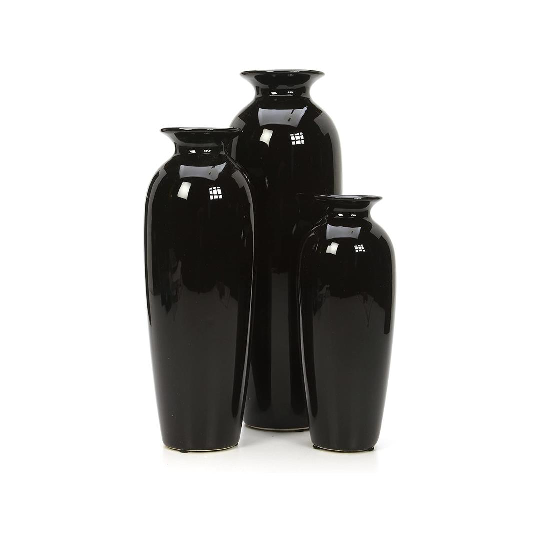Is a Vase an Art?
Time of issue: 2023-08-07 15:41:36The question of whether a vase can be considered art is a thought-provoking and debated topic in the world of aesthetics and artistic appreciation. While vases have traditionally been associated with functionality and utility, they have also evolved into objects of great artistic value and cultural significance. In this article, we will delve into the complexities of this question, exploring the blurred lines between art and functionality in the realm of vases.

Historical Perspective:
The history of vases as art objects can be traced back thousands of years to ancient civilizations like the Greeks, Egyptians, and Chinese. In these societies, vases were meticulously crafted and decorated with intricate designs, often depicting mythological stories or scenes of daily life. These masterpieces were not merely functional containers but also artistic expressions of the culture and beliefs of the time.
Functionality and Aesthetics:
Vases have an inherent duality that blurs the boundaries between art and utility. On one hand, they serve practical purposes, such as holding flowers, plants, or other objects. The form and shape of vases are designed with functionality in mind, ensuring they can properly fulfill their intended purpose. However, the line between function and aesthetics becomes blurred when one considers the artistic elements incorporated into many vases.
Artistic Expression:
The transformation of vases into art pieces is primarily driven by the creativity and skill of the artisans who craft them. Talented potters and ceramicists infuse their creations with artistic expression, using various techniques like wheel throwing, hand-building, sculpting, and glazing. These artistic touches elevate vases from mere utilitarian objects to visually captivating pieces that evoke emotions and stimulate the imagination.
Aesthetic Beauty:
The beauty of a vase lies not only in its practical design but also in its aesthetic appeal. From the elegance of a sleek, minimalist vase to the vibrant colors and intricate patterns of an ornately decorated one, the visual allure of vases plays a pivotal role in their classification as art. People often select vases not only for their functionality but also for how well they harmonize with the aesthetics of their living spaces.
Cultural and Symbolic Significance:
Many vases carry cultural and symbolic significance, further blurring the line between art and functionality. In various cultures, vases have been used in ceremonies, rituals, and rites of passage. They can represent fertility, abundance, and prosperity or serve as symbols of remembrance and respect for the deceased. Such symbolic meaning elevates vases to objects of cultural importance and adds another layer of artistic depth to their identity.
Collectibility and Value:
The art market recognizes the artistic value of certain vases, leading to their collectibility and appreciation as investments. Antique and rare vases from renowned artists or historical periods can fetch high prices at auctions and galleries. The recognition of vases as collectible art highlights their status as more than just functional items and underlines their artistic significance.
Conclusion:
The question of whether a vase is an art is a subjective one, with opinions varying depending on individual perspectives. While vases undeniably possess practical functions, their historical, artistic, aesthetic, and cultural attributes challenge the notion of them being mere utilitarian objects. The creativity and skill of the artisans, the visual appeal, and the cultural symbolism associated with vases all contribute to their status as objects of artistic significance. Ultimately, whether one views a vase as art or not, there is no denying the beauty and cultural richness that these remarkable vessels bring to our lives.
RECENT POSTS
- The Benefits of Wholesale High-Quality Ceramic Products for Retailers
2025-12-17
- Can You Make an Ashtray with Air Dry Clay? Pros, Cons, and Safer Alternatives
2025-12-17
- The Impact of Ceramic Materials in Energy-Efficient Buildings: Benefits and Applications
2025-12-04
- Top 7 Ceramic Cookware Health Benefits: Why It’s a Safer Choice for Your Kitchen
2025-12-04
- How to Clean Ceramic Planters and Improve Their Lifespan?
2025-11-17
- 15 Best Ceramic Holiday Gift Ideas for 2025: Thoughtful, Elegant & Heartfelt
2025-11-17
- Stoneware vs Porcelain vs Earthenware: Quick Decision Guide
2025-10-09
- Are Ceramic Glazes Food Safe? The Truth Behind the Shine
2025-10-09










